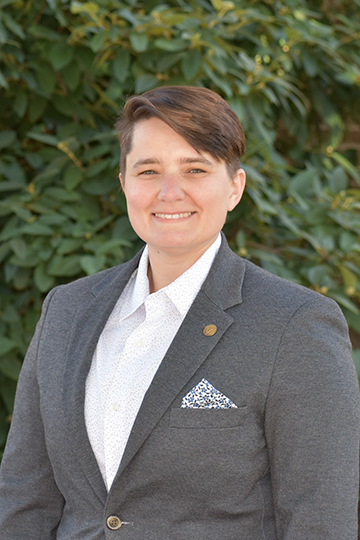
Lauren enlisted in the United States Air Force right out of high school. Before leaving military service, she went on several deployments and, unfortunately, during those deployments she saw a lot of amputations. "It was shocking to see a person no longer have the use of their arms or legs," but then she saw firsthand how prosthetics would enable airmen to return to active duty in the field. "I thought this was really cool."
During her second deployment, Lauren's personal struggle with spondylolithesis (a spinal disorder that causes pain and immobility) required her to eventually leave the military. This experience got her interested in physical therapy, and after leaving the Air Force, Lauren chose to enroll in college to study kinesiology. She wanted to understand how the human body works.
Soon, however, the curriculum failed to hold her attention, and Lauren decided to pursue biomedical engineering instead. Her story came full circle when she did a class project on prosthetics.
As she looked into the challenges facing those who require an artificial limb, Lauren became increasingly concerned about the prohibitive cost involved for many. Diabetic patients sometimes find that prosthetics are not covered by insurance. And, in particular, children sometimes are not able to get a prosthetic simply because they are always growing, and continually replacing the prosthetic as they grow is too expensive for many families.
Enter 3D printing. Lauren discovered that prosthetics could be 3D printed, and found open source files available on the internet. “I became excited about this practical way that I could help families, and change a child's life.”
For now Lauren has the goal of designing and printing a single finger, for single finger amputation. She is learning, researching, and prototyping (most recently in the Innovation Lab at Notre Dame, where 3D printers are available for her use), and trying to figure out a way she can provide prosthetics for kids, at an affordable price.
It's one way she can fix things that matter.
To learn more about 3D printing prosthetics, you can visit this site here (information about e-NABLE devices and related resources), NIH's 3D print exchange site, or this article: "3D Printed Prosthetics | Where We Are Today."
Originally published by at esteem.nd.edu on August 21, 2020.